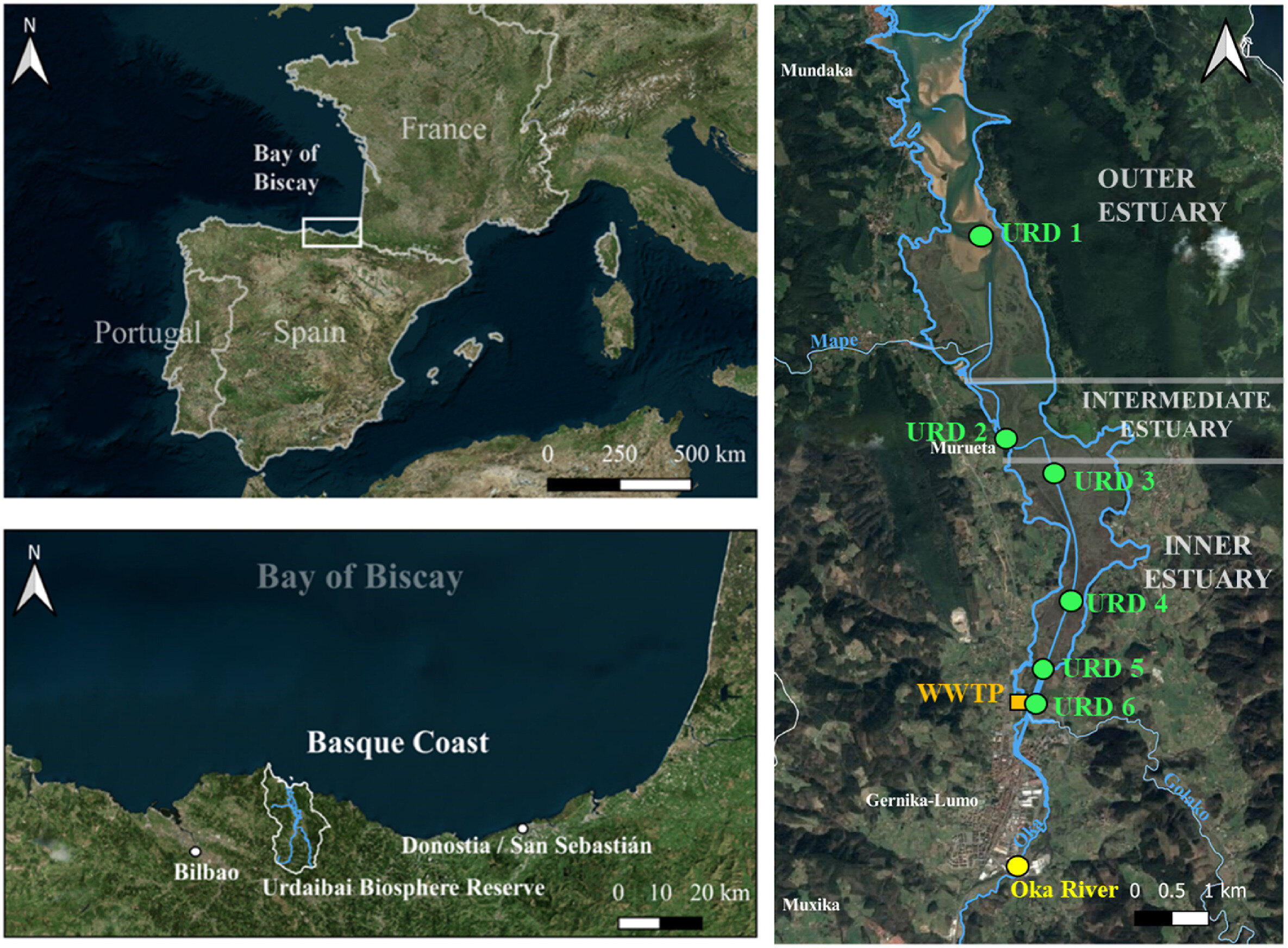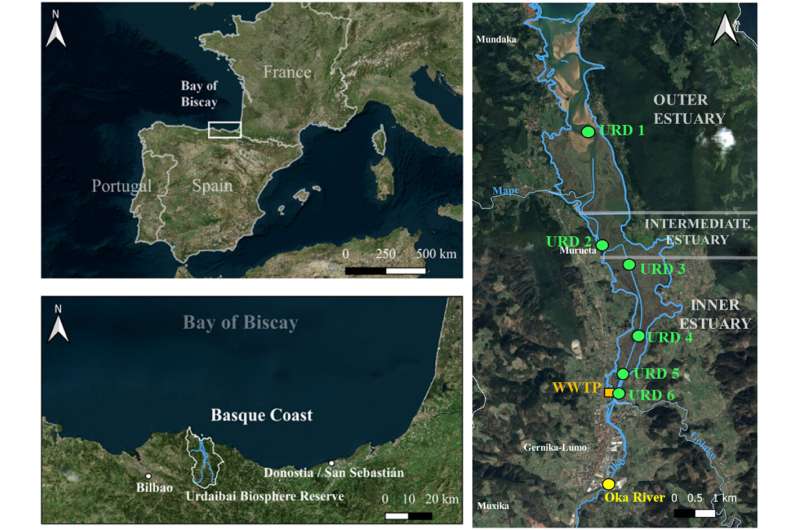

A study by the UPV/EHU’s Department of Plant Biology and Ecology has evaluated the response of Urdaibai estuary phytoplankton to the changes brought about after the closing-down of the Gernika wastewater treatment plant; a novel tool based on pigment analysis and developed by the Phytoplankton Ecology group was used. The results show that the physicochemical quality of the water has improved and this has led to changes in the phytoplankton community that are heading in the right direction.
The findings are published in the journal Marine Environmental Research.
Phytoplankton, a collection of photosynthesizing microscopic organisms, are highly sensitive to variations in nutrient availability. So they are a useful indicator when assessing excess inorganic nutrients from human activity (eutrophication) and management actions to reduce them.
Jone Bilbao, a researcher at the University of the Basque Country (UPV/EHU), has evaluated the medium-term response of the phytoplankton community in the Urdaibai estuary to the discontinuing of wastewater discharge from the Gernika wastewater treatment plant. “We analyzed the changes in the phytoplankton biomass and community composition before (in 2020) and after (in 2022) the clean-up works,” she explained.
The results of the research show “significant medium-term effects on the system,” said Sergio Seoane, lecturer in the department of Plant Biology and Ecology and who led the study. The nutrients supplied by the sewage station (ammonium and phosphate) decreased drastically, and this had a direct effect on phytoplankton biomass and composition of the community.
“In the outer and middle estuary, the biomass decreased significantly due to lower nutrient concentrations, while in the area around the sewage treatment plant the biomass increased following the sewage system works, probably because the excessive ammonium loads from the discharge were suppressing phytoplankton growth in the area,” he said. The researchers also detected important changes in the community; “for example, we detected a significant increase in some groups after the works,” he adds.
Pigment-based methodology
To conduct the study they used PIGMENTUM, a novel tool based on pigment analysis and recently developed by these researchers. It is a tool that uses pigments to find out the composition of the phytoplankton community “not at a specific level, but to find out the percentage of each pigment group in the community,” explained Seoane.
“This research has served to demonstrate that it is a useful tool for studying composition and variability, as it records organisms of such a small size which would otherwise have been overlooked if microscopy alone had been used,” added Bilbao.
According to the researchers from the Department of Plant Biology and Ecology, “these changes could have ecological implications in the near future, as changes in the composition of the phytoplankton community may affect the whole food chain (as it is at the bottom of the chain).”
They said this study confirmed “the beneficial effects of the above-mentioned clean-up works. There has clearly been an improvement in the chemical quality of the water, and there are indications that progress is being made towards better water quality, although biological recovery always takes longer, because there is resilience in the estuary and there are substances that remain in the sediments, but changes have also been seen.”
Seoane and Bilbao continue to study the phytoplankton community of the Urdaibai estuary. “The subsequent sampling we have been doing shows that the community has moved in the right direction,” they concluded.
More information:
Jone Bilbao et al, Response of the phytoplankton community to the cessation of wastewater discharges in the urdaibai estuary (SE bay of biscay) based on PIGMENTUM analysis of HPLC pigments, Marine Environmental Research (2024). DOI: 10.1016/j.marenvres.2024.106668
Provided by
University of the Basque Country
Citation:
Phytoplankton community shifts after wastewater treatment plant closure (2024, October 10)
retrieved 10 October 2024
from https://phys.org/news/2024-10-phytoplankton-community-shifts-wastewater-treatment.html
This document is subject to copyright. Apart from any fair dealing for the purpose of private study or research, no
part may be reproduced without the written permission. The content is provided for information purposes only.